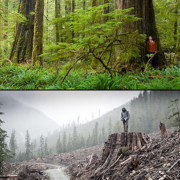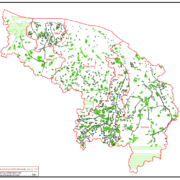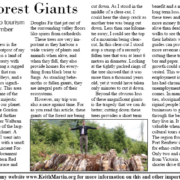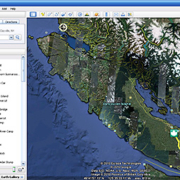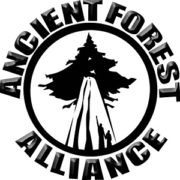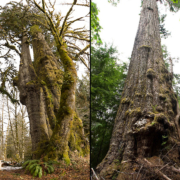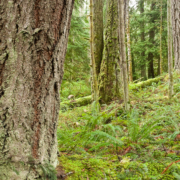Ancient Forest Alliance commends the BC Government and Forests Minister Pat Bell for taking a step forward to protect some of Vancouver Island’s Old-Growth Forests
Ancient Forest Alliance commends the BC Government and Forests Minister Pat Bell for taking a step forward to protect some of Vancouver Island’s Old-Growth Forests
Legislated End to Logging of Endangered Old-Growth Forests Still Needed
Yesterday the BC government announced the protection of 38,000 hectares of old-growth forests on central and northern Vancouver Island in a series of Old-Growth Management Areas. On Vancouver Island there are 400,000 hectares of productive old-growth forests outside of protected areas, with another 200,000 hectares in parks and Old-Growth Management Areas.
On Vancouver Island there was once 2.3 million hectares of productive old-growth forests at the time of European colonization, of which 1.7 million hectares have now been logged (leaving 600,000 hectares of productive old-growth). In addition, there are 700,000 hectares of low productivity or marginal old-growth forests of stunted, smaller trees in bogs, subalpine landscapes, and on rocky slopes, most of which still remain.
“The Ancient Forest Alliance commends the BC government and Forest Minister Pat Bell for taking an important step forward to protect some of the endangered old-growth forests on central and northern Vancouver Island,” stated Ken Wu, Ancient Forest Alliance campaign director. “The new protections encompass up to 10% of the remaining, endangered ancient forests on Vancouver Island – we encourage them to save the other 90%, because so little remains now. They also need to extend protections to southern Vancouver Island in the Upper Walbran Valley, San Juan Valley, Gordon Valley, Avatar Grove, and other areas. Most importantly, they need to create a Provincial Old-Growth Strategy that will enact timelines to ban or phase-out old-growth logging in regions where the old-growth forests are now scarce, such as Vancouver Island, the Lower Mainland, and throughout southern BC.”
Old-growth forests are important for wildlife, tourism, the climate, and many First Nations cultures.
The Ancient Forest Alliance has created a SPECTACULAR, new photogallery of Canada’s largest trees and stumps on Vancouver Island taken by Ancient Forest Alliance photographer and campaigner TJ Watt at: https://16.52.162.165/photos-media/
Old-Growth Management Areas are often considered to be “softer” protective designations because they can be created or removed by Cabinet (unlike provincial parks, conservancies, or ecological reserves that are created by the Legislative Assembly), they do not show up on any major maps (and therefore are not in the public’s consciousness should the Cabinet decide to eliminate any of them), and sometimes include marginal or low productivity stunted forests that can’t be logged. However, many of them also protect important tracts of big tree ancient forests.
“How many jurisdictions on Earth have trees that are 1000 years old and that can grow as wide as a living room and as tall as a skyscraper? We’ve already lost 75% of Vancouver Island’s productive old-growth forests, and only about 8% of what was once here are protected in parks and Old-Growth Management Areas. While this is an important step forward which we thank the BC government for, they need to protect the last remnants of Vancouver Island’s old-growth forests because so little remains, and ensure the sustainable logging of second-growth forests which now constitute the vast majority of the landscapes in southern BC,” stated TJ Watt, Ancient Forest Alliance campaigner.

